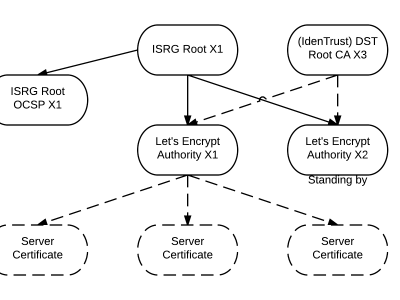Linux中国
Linux终端的乐趣之把玩字词计数

在使用的脚本来分析文本文件之前,我们必须有一个文本文件。为了保持一致性,我们将创建一个文本文件,man命令的输出如下所述。
$ man man > man.txt
以上命令是将man命令的使用方式导入到man.txt文件里。
我们希望能得到最平常的单词,对之前我们新建的文件执行如下脚本。
$ cat man.txt | tr ' ' '�12' | tr '[:upper:]' '[:lower:]' | tr -d '[:punct:]' | grep -v '[^a-z]' | sort | uniq -c | sort -rn | head
Sample Output
7557
262 the
163 to
112 is
112 a
78 of
78 manual
76 and
64 if
63 be
上面的脚本,输出了最常使用的十个单词。
如何看单个的字母呢?那就用如下的命令。
$ echo 'tecmint team' | fold -w1
Sample Output
t
e
c
m
i
n
t
t
e
a
m
注: -w1只是设定了长度
现在我们将从那个文本文件中掰下来的每一个字母,对结果进行排序,得到所需的输出频率的十个最常见的字符。
$ fold -w1 < man.txt | sort | uniq -c | sort -rn | head
Sample Output
8579
2413 e
1987 a
1875 t
1644 i
1553 n
1522 o
1514 s
1224 r
1021 l
如何区分大小写呢?之前我们都是忽略大小写的。所以,用如下命令。
$ fold -w1 < man.txt | sort | tr '[:lower:]' '[:upper:]' | uniq -c | sort -rn | head -20
Sample Output
11636
2504 E
2079 A
2005 T
1729 I
1645 N
1632 S
1580 o
1269 R
1055 L
836 H
791 P
766 D
753 C
725 M
690 U
605 F
504 G
352 Y
344 .
请检查上面的输出,标点符号居然包括在内。让我们干掉他,用tr 命令。GO:
$ fold -w1 < man.txt | tr '[:lower:]' '[:upper:]' | sort | tr -d '[:punct:]' | uniq -c | sort -rn | head -20
Sample Output
11636
2504 E
2079 A
2005 T
1729 I
1645 N
1632 S
1580 O
1550
1269 R
1055 L
836 H
791 P
766 D
753 C
725 M
690 U
605 F
504 G
352 Y
现在,我们有了三个文本,那就让我们用如下命令查看结果吧。
$ cat *.txt | fold -w1 | tr '[:lower:]' '[:upper:]' | sort | tr -d '[:punct:]' | uniq -c | sort -rn | head -8
Sample Output
11636
2504 E
2079 A
2005 T
1729 I
1645 N
1632 S
1580 O
下一步我们将会生成那些罕见的至少十个字母长的单词。以下是简单的脚本:
$ cat man.txt | tr '' '�12' | tr '[:upper:]' '[:lower:]' | tr -d '[:punct:]' | tr -d '[0-9]' | sort | uniq -c | sort -n | grep -E '..................' | head
Sample Output
1 ──────────────────────────────────────────
1 a all
1 abc any or all arguments within are optional
1 able see setlocale for precise details
1 ab options delimited by cannot be used together
1 achieved by using the less environment variable
1 a child process returned a nonzero exit status
1 act as if this option was supplied using the name as a filename
1 activate local mode format and display local manual files
1 acute accent
注: 上面的.越来越多,其实,我们可以使用.{10} 得到同样的效果。
这些简单的脚本,让我们知道最频繁出现的单词和英语中的字符。
现在结束了。下次我会在这里讲到另一个有趣的话题,你应该会喜欢读。还有别忘了向我们提供您的宝贵意见。
via: http://www.tecmint.com/play-with-word-and-character-counts-in-linux/
作者:Avishek Kumar 译者:MikeCoder 校对:wxy
本文转载来自 Linux 中国: https://github.com/Linux-CN/archive
对这篇文章感觉如何?
太棒了
0
不错
0
爱死了
0
不太好
0
感觉很糟
0
More in:Linux中国
捐赠 Let's Encrypt,共建安全的互联网
随着 Mozilla、苹果和谷歌对沃通和 StartCom 这两家 CA 公司处罚落定,很多使用这两家 CA 所签发证书的网站纷纷寻求新的证书签发商。有一个非盈利组织可以为大家提供了免费、可靠和安全的 SSL 证书服务,这就是 Let's Encrypt 项目。现在,它需要您的帮助
Let's Encrypt 正式发布,已经保护 380 万个域名
由于 Let's Encrypt 让安装 X.509 TLS 证书变得非常简单,所以这个数量增长迅猛。
关于Linux防火墙iptables的面试问答
Nishita Agarwal是Tecmint的用户,她将分享关于她刚刚经历的一家公司(印度的一家私人公司Pune)的面试经验。在面试中她被问及许多不同的问题,但她是iptables方面的专家,因此她想分享这些关于iptables的问题和相应的答案给那些以后可能会进行相关面试的人。 所有的问题和相应的答案都基于Nishita Agarwal的记忆并经过了重写。 嗨,朋友!我叫Nishita Agarwal。我已经取得了理学学士学位,我的专业集中在UNIX和它的变种(BSD,Linux)。它们一直深深的吸引着我。我在存储方面有1年多的经验。我正在寻求职业上的变化,并将供职于印度的P
Lets Encrypt 已被所有主流浏览器所信任
旨在让每个网站都能使用 HTTPS 加密的非赢利组织 Lets Encrypt 已经得了 IdenTrust的交叉签名,这意味着其证书现在已经可以被所有主流的浏览器所信任。从这个里程碑事件开始,访问者访问使用了Lets Encrypt 证书的网站不再需要特别配置就可以得到 HTTPS 安全保护了。 Lets Encrypt 的两个中级证书 ...






















